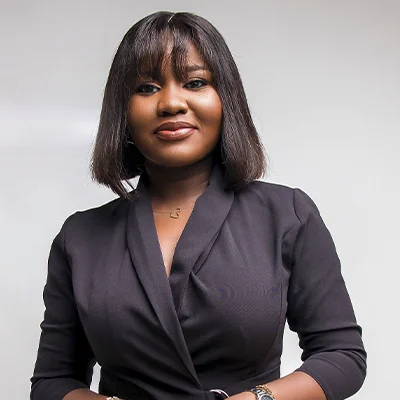Thousands of people migrate to foreign countries every year for a better life. Many of these people end up in the United States, and when they do, they often need employment. However, employment for non-U.S. citizens usually means getting work authorization, as these people do not have legal permission to work or engage in paid employment. Sometimes, a U.S. employer may decide to sponsor a foreign worker on a work visa to the U.S. if they cannot find a skilled U.S. worker to take up that position.
This will often require getting labor certification, otherwise known as PERM. PERM (Program Electronic Review Management) is the first step of the employment-based green card. Employers use it to sponsor employees for permanent residence in the United States, which allows them to live and work legally without fear of deportation. This guide will tell you about PERM, including its definition, purpose, eligibility requirements, and steps involved.
What is PERM?
PERM (Program Electronic Review Management) is a system through which employers submit an electronic application to the Department Of Labor (DOL) to attest that they have taken the required steps to recruit U.S. workers and have been unable to find a qualified U.S. worker for the position.
For an employer to obtain an immigrant visa on behalf of a current or prospective employee, the law requires that the employer (sponsor) apply for a certification from the U.S. Department of Labor (DOL) that no U.S. workers are qualified to fill the foreign national’s position and that the employer will pay at least the prevailing minimum wage for the position, as determined by the DOL.
To ensure there are no U.S. workers available for that position, the employer must first conduct a recruitment campaign to find qualified U.S. workers. Only after failure to find them can the employer file a PERM application. Ultimately, PERM is essential for obtaining employment-based green cards, and the reasons for this are given below:
- Labor Market Test: PERM ensures that no qualified United States workers are available for the job position, and employers must go through a thorough recruitment process to prove this.
- Protecting U.S. Workers: The program is intended to protect U.S. workers by ensuring that their employment possibilities or earnings are not negatively affected by the employment of foreign labor.
- Regulatory Requirement: Under U.S. Department of Labor regulations, most employment-based immigrant visas (EB-2 and EB-3 categories) require PERM certification as a prerequisite. Without this certification, an overseas worker cannot proceed with the green card application.
- Employer’s Commitment: Due to the demanding nature of PERM on employers, it can prove an employer’s commitment to employing an alien worker and show their readiness to comply with U.S. labor laws and regulations.
- Verification of Job Offer: PERM checks whether the offered job to the foreigner is genuine, necessary, and meets prevailing wage standards.
Upon approval of the PERM application, the employer may file an I-140 Immigrant Petition for Alien Worker with the United States Citizenship Immigration Services (USCIS), another step towards getting the foreigner a green card.
Purpose of PERM
The main purpose of PERM is to prevent American employees’ job opportunities, salaries, and working conditions from being negatively affected by the employment of foreign workers. However, there are some other reasons for PERM, which include:
- Ensuring the Unavailability of U.S. Workers: Employers must establish that no Americans are qualified and willing to do the job.
- Protecting Wages and Conditions for U.S. Workers: Any foreign worker who is to be hired should not, in any way, affect the wages and work conditions of U.S. citizens in similar roles.
- Making Certification Faster: The electronic system was designed to expedite the labor certification process, making it more convenient.
Overall, PERM is important in allowing employers to recruit permanent foreign employees since this framework considers both U.S. workers and employers.
Eligibility For PERM
To be eligible for PERM, there are certain criteria that both the employer and foreign worker must meet. They include:
1. Job Offer from a U.S. Employer: The foreign worker must be offered permanent and full-time employment from a US employer.
2. Prevailing Wage Determination: The Department of Labor (DOL) has to give a prevailing wage determination. This is to ensure that the salary offered by an employer to a migrant worker is not less than what is paid on average to U.S. workers.
3. Recruitment Process: A recruitment process to test the U.S. labor market must occur. The U.S. employer is expected to conduct this, and the aim is to prove, without doubt, that there are no available qualified American laborers to fill the vacancy.
4. Filing ETA Form 9089: Once the recruitment exercises have been completed and there are no responsive American applicants, the employer can proceed to fill an ETA form 9089 to report that there are insufficient or no U.S. workers to take up that position.
5. Minimum qualification: For the sake of transparency, the job requirements should not be tailored to match the exact skills of an immigrant worker. The job itself must reflect the actual minimum qualification requirement of that position. This ensures the job is available for U.S. workers if they want it.
6. Employer’s capacity to pay: The employer must show that it can consistently pay the wage offered from when the application is submitted until the foreign worker gets their green card.
These are the basic steps and requirements for employment-based permanent residence through the PERM system. Every case may have peculiarities, so it is highly recommended to consult with immigration attorneys to navigate this process efficiently.
Steps In The PERM Application Process
The PERM process involves several steps to ensure adherence to the U.S. Department of Labor (DOL) regulations. Here is a summary of the most important ones:
1. Determine Job Description and Requirements:
Highlight the job title, duties entailed, educational qualifications, and experience required for the role.
2. Obtain Prevailing Wage Determination:
The employer must request a prevailing wage determination from the National Prevailing Wage Center (NPWC), which determines the minimum wage that must be offered for the position, depending on the job location and requirements.
3. Conduct Recruitment Process:
- Place a Job Order: At least 30 days before filing ETA Form 9089, post a job order with the State Workforce Agency (SWA) having jurisdiction authority over the area of intended employment.
- Post Internal Notices: Employers are required to post a job notice somewhere where it can be easily read by potential U.S. employees for at least ten consecutive calendar days.
- Advertise in Newspapers: Employers must run two Sunday advertisements in a general-circulation newspaper serving the area of intended employment.
4. Review and Document the Recruitment Process:
- Evaluate all applicants to determine if any qualified U.S. workers are available for the position.
- Keep detailed files of every step taken in recruitment, including a copy of the ads placed, resumes received, interview notes, and reasons for rejecting any U.S. applicants.
5. Prepare and File ETA Form 9089:
- If no qualified U.S. workers are found, the employer can prepare and submit ETA Form 9089 to the DOL.
- The form contains information such as the employer’s details and job details for which foreign labor is being sought. It also contains information about efforts made to recruit U.S. workers and about the foreign worker.
6. Await PERM Approval:
- The DOL will review the application and may audit it to ensure compliance with regulations.
- The employer receives labor certification and proceeds to the green card application process if approved.
7. File I-140 Immigration Petition:
After approval of PERM labor certification, the employer files a Form I-140 (Immigrant Petition for Alien Worker) with the USCIS.
8. File Adjustment of Status or Consular Processing:
- If the foreign worker is U.S.-based, they can fill in Form I-485 (Application to Register Permanent Residence or Adjust Status).
- If the foreign worker is outside the country, they will do this through consular processing at the United States embassy or consulate.
PERM Processing Times
The duration it takes to process PERM may vary depending on factors such as the case’s complexity, the number of applications being processed, and if the application has been chosen for audit. However, processing times typically range from:
1. Requesting a Prevailing Wage Determination:
This step usually takes 4 to 5 months. Delays may occur in cases where the National Prevailing Wage Center (NPWC) needs more information or clarification.
2. Recruitment Process:
The recruitment period must be at least 60 days. This includes a mandatory 30-day job order with the State Workforce Agency and an additional 30-day cooling-off period following the last recruitment step. After this, the employer can file the PERM application.
3. Filing ETA Form 9089:
When the recruitment process is done, an employer may file ETA Form 9089 with DOL. Processing times are often faster for online submissions than paper ones.
4. PERM Application Processing:
- Normal Processing: This generally takes 6 to 7 months from the filing date.
- Audit Review: If selected for audit, the processing time typically increases by 6 to 7 months. Depending upon the complexity of the audit and how quickly the employer responds, some audits may even extend the processing time.
5. Total Time Frame:
Overall, the process usually takes ten (10) and eighteen (18) months from obtaining a prevailing wage determination until receiving PERM certification. Cases without audits tend to be lower, while audited cases can take longer. Because processing times are subject to change, it is crucial to often check with the Department of Labor for updates or consult an immigration lawyer who will provide you with up-to-date information.
Post-PERM Approval
After the PERM is approved, the employer and foreign worker can proceed to the next green card application process step. Below is what you need to do:
1. File Form I-140 (Immigrant Petition for Alien Worker):
- The employer files Form I-140 with U.S. Citizenship and Immigration Services (USCIS).
- The purpose of Form I-140 is to demonstrate that the foreign worker meets the job requirements specified in the PERM application and that the employer is able to pay the offered wage.
- Supporting documentation, such as a certified PERM labor certification, evidence of the foreign worker’s qualifications, and proof of the employer’s ability to pay, must be included.
2. Priority Date:
This is when your PERM has been filed. This date determines an employee’s place in line for permanent residency based on his/her employment-based visa category.
3. Wait for Priority Date to Become Current:
The Visa Bulletin, published by the U.S. Department of State every month, will determine when a priority date becomes current for a foreign worker waiting due this way. The waiting period varies depending on a foreigner’s preference level (EB2 or EB3) and their charge ability country.
4. File Form I-485 (Adjustment of Status) or Consular Processing:
- Adjustment of Status: If a foreign national is in the United States and has a valid status, they can file Form I-485 with USCIS to adjust their status to that of permanent resident (being a green card holder). If the current priority date, this process can occur concurrently with I-140.
- Consular Processing: A foreign worker outside the U.S. or who prefers consular processing will apply for an immigrant visa at any US embassy or consulate in his or her home country. The National Visa Center (NVC) processes the case once the I-140 is approved and the priority date becomes current.
5. Go to Interview:
- USCIS may require a foreign worker to interview for adjustment of status. Consular processing will be conducted at the American embassy or consulate.
- During the interview, an officer checks a foreign employee’s eligibility to ensure that all provided information is accurate.
6. Get a Green Card:
- Once the adjustment of status is granted, the immigrant will receive a green card by mail.
- If consular processing is approved, the foreign worker will receive an immigrant visa in their passport and can travel to the United States after which they may get their green cards at border entry.
Factors Influencing PERM Processing Times
The following are factors that may influence PERM processing times:
- Volume of applications
- Complexity of the case
- Quality and completeness of the application
- Prevailing wage determination
- Recruitment process
- Audit or supervised recruitment
- Changes in regulations or policies
- DOL’s operational capacity
- Backlogs and processing delays
- Location and State Workforce Agency (SWA) efficiency
Common Delays in the PERM Process
Below are some common delays typically experienced in the PERM process:
- Prevailing Wage Determination (PWD): This is usually the first step in the process, and it can take several months as DOL establishes appropriate wage levels for the position.
- Job Advertisement and Recruitment: Employers must advertise the job and engage in recruitment efforts to ensure there are no qualified U.S. workers available. This process takes at least 60 days and may be longer if re-advertising is necessary.
- Application Review: This takes place after filing a PERM application. The DOL reviews it for a few months and spends even more time if the application is audited.
- Audits: Processing time may be significantly extended if applications are selected for audits. These audits require additional documentation that can add several months to the process.
- Supervised Recruitment: Unfortunately, in some cases, the DOL could require overseen recruitment, whereby employers are required to liaise with the DOL for more job ads and then report recruiting outcomes, further delaying things.
- Technical Issues or Errors: Similarly, mistakes made during application or technical problems involving electronic submission may also cause delays, as corrections or resubmissions might be needed.
- High Volume of Applications: Processing times may be further slowed during high volumes of applications due to DOL’s increased workload.
Legal Assistance
There are several advantages to hiring an immigration attorney for your PERM application process. Some of them are given below:
- Expertise and Knowledge: Immigration attorneys have profound insight and understanding of the complexities of the PERM application process. For this reason, they’re often compliant with these rules, which reduces the risk of error.
- Efficient Process Management: They keep track of deadlines and requirements to speed up procedures or prevent unnecessary delays.
- Accurate Documentation: They ensure that all forms and documents are correctly completed, minimizing the risk of application denial or audits due to errors.
- Handling Audits: If an audit is conducted on the application, your lawyer can respond promptly and effectively, thus speeding up the resolution process.
- Navigating Complex Situations: Lawyers approach and navigate complex issues by applying specifically designed approaches.
- Legal representation: They can represent and negotiate on behalf of employers or employees in interactions with the Department of Labor.
- Peace of mind: Employers and employees feel more relaxed when they know their application is handled by an experienced professional.
- Updated Information: To conform with the current requirements, advocates keep themselves updated about developments in immigration policies.
For legal assistance with your PERM application, visit immigration question
FAQs on How Long Does PERM Take?
1. What is the average time for PERM approval?
The average time for a PERM application is approximately 6-12 months, but it can vary depending on several factors.
2. Can PERM processing be expedited?
The PERM process cannot be expedited. This is why early planning and faultless execution are important.
3. What happens if my PERM application is audited?
If your PERM application is audited, it can significantly extend the total processing time. A PERM audit often means that the Department of Labor (DOL) has selected your application for additional scrutiny. The application may even get denied, or the petitioner may be subjected to supervised recruitment for future certification processes.
4. How long does the recruitment process take?
The recruitment process for a PERM application takes about 60 to 90 days, usually depending on strict regulatory timelines.
5. What are common reasons for PERM denials?
There are several reasons why a PERM application may be denied. The most common ones are discrepancies in application information and incorrect or incomplete documentation.
6. Is there an appeal process if my PERM application is denied?
You can request reconsideration with the Certifying Officer (CO) who issued the denial. If your request for reconsideration is also denied or you receive no response within 30 days, you can file an appeal directly with the Board of Alien Labor Certification Appeals (BALCA).






